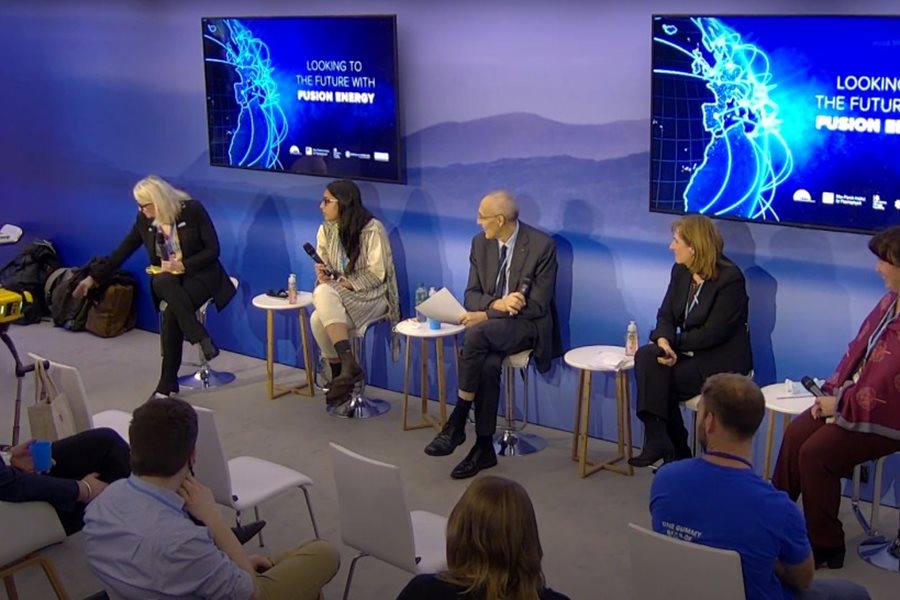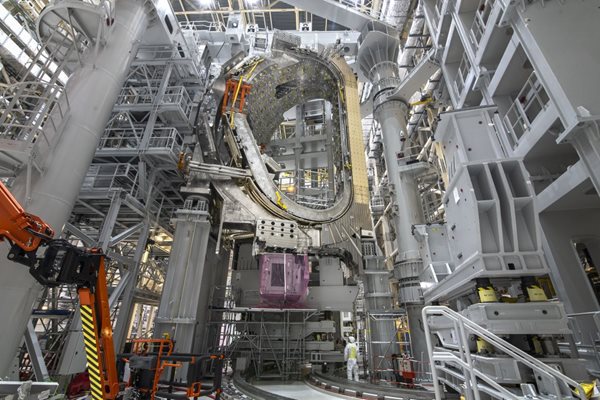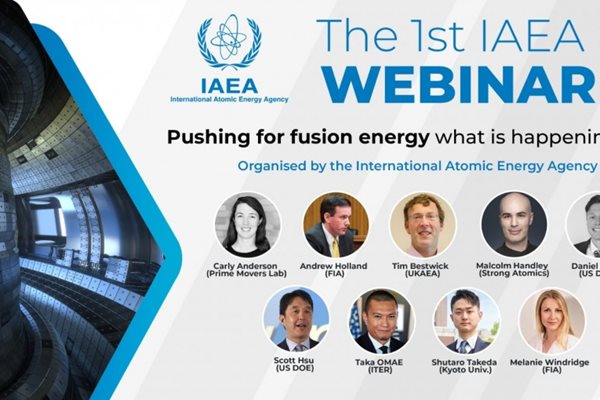
you're currently reading the news digest published from 08 Nov 2021 to 15 Nov 2021
featured2
of-interest4
video1
press31
featured
COP26 | Fusion and climate change: a conversation begins
For the past six years, beginning with the famous COP21 in Paris, ITER and the global fusion community have fought for a seat at the table in climate change discussions. Year after year, the best-laid plans have been rejected. The ITER Organization has gained accreditation—entitling its director-general to a 3-minute speech in the plenary session—but no more than that. This year, for COP26 in Glasgow, it was the same story: all fusion proposals were rejected. Until, at the last minute, someone intervened. Rumour has it that Prime Minister Boris Johnson himself was the one who stepped in, insisting on a place for fusion on the program. Certainly that would be commensurate with the UK government's recent fusion advocacy; in recent years, the United Kingdom has committed more than £200 million toward accelerating the arrival of fusion electricity generation, in addition to its contributions to the ITER project, and as the host of JET (Joint European Torus). Whoever the intercessor, ITER and its co-host, the UKAEA (United Kingdom Atomic Energy Authority) were determined to maximize the opportunity: a 60-minute panel in the diplomatic Blue Zone on 'Looking to the Future with Fusion Energy' on the final day of COP26. The panel lived up to its ambitions, delivering a conversation that was animated and hopeful. It opened by defining fusion's relevance to COP26 and its goal of a green energy future: as Aneeqa Khan put it, '[Fusion] has the capacity to provide a stable baseload when it's not windy, when it's not sunny. At the moment, that role is being taken by fossil fuels, and we need to stop that.' Panelists went on to reflect on remaining technological, regulatory, and communication challenges; the value of private-public partnership and international collaboration—including the increasing contributions of developing countries; and the importance of education both for citizens and for the coming generation of fusion leaders. Perhaps the most telling outcome of the session is that, despite the diverse make-up of the panel, there was no argument regarding the varying projected timelines for commercializing fusion. The target, rather, was on how to collaborate to address remaining obstacles more efficiently. Even when an audience member asked how rapidly fusion could be commercialized 'if governments were to treat the climate emergency in a similar way to how they treated the pandemic,' the panel kept the spotlight on joint innovation—from manufacturing to education—to achieve the promise of fusion 'soon enough to make a difference.' As Jane Hotchkiss of Energy for the Common Good put it, the event itself was a milestone. 'We are, right now, witnessing fusion energy's involvement in the climate discussion, and until now that's never happened.' Follow this link to watch the panel discussion as it unfolded.
Image of the week | A most daunting task
It may be one of the most spectacular Christmas presents ITER will receive this year: the first building block of the most complex plasma chamber ever conceived. The sector #6 sub-assembly, the first of the nine 40° sections of the ITER vacuum vessel, is almost ready to be lowered in the assembly pit. The sub-assembly is formed by a 440-tonne vacuum vessel sector, two 360-tonne toroidal field coils, lighter but no less essential thermal shield panels, and a set of smaller components that bring the total weight of the sub-unit to approximately 1,250 tonnes. A few more weeks and the assembly will be finalized. The ITER teams and their contractors will have accomplished one of their most daunting tasks: aligning components as tall as a six-storey building with almost clockwork precision.
of-interest
Understanding energy
Who knows how much energy 1 joule represents? How much oil does it take to make a mobile phone? How much coal is used in the world? Despite all the debate about this crucial subject, most of us are in fact 'energy blind.' We often talk about energy without fully appreciating what it means today, or how central it is to all human evolution. A new book by Greg De Temmerman—an energy physicist with a PhD in experimental physics, managing director at the think tank Zenon Research, and former scientific coordinator at ITER—provides the keys to understanding energy in a fun, short chronicle format. Available for pre-order in English and French at Editions la Butineuse.
FuseNet Student Council: applicants wanted
FuseNet is the European Fusion Education Network, formed to promote access to fusion education and build a network of people to make fusion a reality. If you are a fusion enthusiast in the master's or doctoral phase of your education at one of FuseNet's affiliated member associations, you may be qualified to serve on the FuseNet Student Council. The Student Council—one of the two permanent FuseNet advisory bodies—is charged with advising the Board of Governors on those matters that are of interest to students. The Council predominantly convenes digitally, but it also has at least one physical meeting each year. Members to the Student Council are appointed for one year, renewable once. Should you wish to apply to become a member of the FuseNet Student Council, send a 400-word motivation letter and one-page curriculum vitae to student.council@fusenet.eu by 1 December 2021. Read more about the FuseNet Student Council here.
Upcoming: IAEA webinar on fusion
Scientists, engineers, policymakers, entrepreneurs and investors interested in fusion are invited to join the International Atomic Energy Agency's first fusion webinar on Monday, 22 November 2021. Among the planned talks on the potential of fusion as a carbon-free energy source and the technology needed to make it possible, Takayoshi Omae will present the 'Way Forward for the Fusion Community' on behalf of the ITER Organization. The webinar will also include a panel discussion with chair Melanie Windridge (Fusion Industry Association), who will also welcome questions from participants. This event, hosted by IAEA's Sehila M. Gonzalez de Vicente, begins at 17:00 CEST and closes at 19:15. Participation is free, but registration is required. Please visit the original announcement, here, for registration details and more information. (Added on 30 November 2021: You can find the recording of the event here.)
UKAEA's Ian Chapman: Fusion requires "COVID-scale" investment
The world needs to mount a 'COVID-scale' investment worth hundreds of billions of pounds in green technologies if it is to tackle global warming, the head of Britain's nuclear fusion program Ian Chapman warned in an interview with i News on 11 November. Speaking ahead of a forum on fusion power at the COP26 climate conference in Glasgow, the chief executive of the United Kingdom Atomic Energy Authority (UKAEA) warned that global leaders have not yet fully grasped the urgency and importance of fully funding existing and emerging technologies such as fusion, carbon capture and next generation solar power to provide a full portfolio of green energy sources. 'There are all sorts of things that we should be investing hundreds of billions into and we're not. Globally, we are spending hundreds of billions this year on extracting fossil fuels. As a [global] society, we don't have our priorities in the right place. We should realize that this is an existential problem and deal with it in the same way that we have approached COVID-19, where we have invested heavily in the technology that it going to get us out of the crisis. If we treated climate change in the same way, of course we would deal with it quicker.' Chapman argues that fusion has the potential to replace gas and coal as the source of 'base load' continuous energy production to supplement weather-dependent sources of green power. See the full interview at iNews. Image credit: KSTAR






